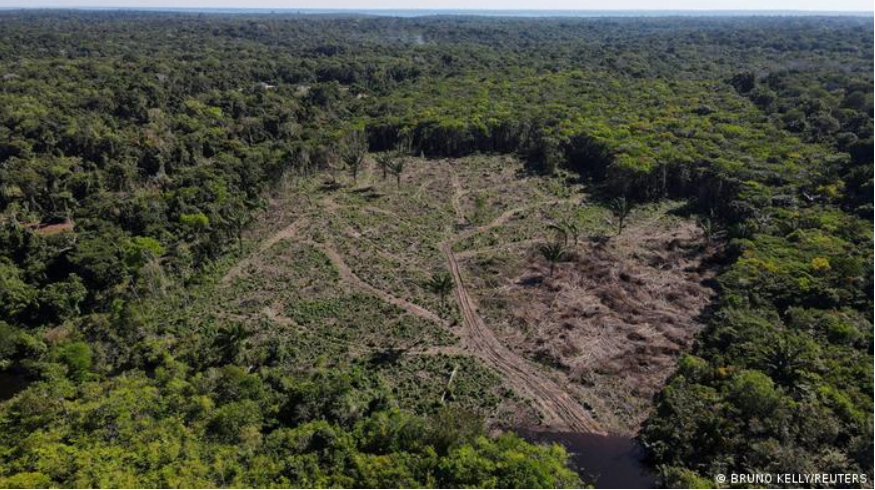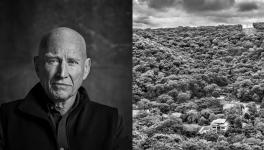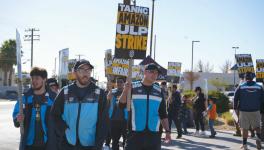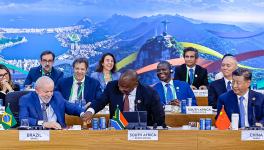How Has The Amazon Rainforest Changed Under Jair Bolsonaro?

Deforested areas are often cleared for agriculture or mining operations
The Amazon rainforest is regarded as one of the so-called tipping elements capable of destabilizing the global climate. A loss of 20-25% of forest cover in the Amazon basin could be enough to bring us to the tipping point. Recent studies have shown that around 18% of the Brazilian Amazon has already been cleared — and around 60% of the rainforest's total area lies within the territory of Brazil.
After several years in which deforestation rates dropped significantly, they rose again sharply after the right-wing populist Jair Bolsonaro took office as president of Brazil on January 1, 2019. In October 2021, activists and Indigenous groups even filed a lawsuit with the International Criminal Court over Bolsonaro's environmental policies. However, legal experts have said it could be years before the ICC even decides whether or not to accept the suit.
Deforestation up during Bolsonaro's presidency
Rainforest clearance is monitored using satellite imagery from Brazil's world-renowned National Institute for Space Research. Its images show that the area deforested each year has risen sharply since Bolsonaro took office, to more than 10,000 square kilometers (around 3861 square miles). In 2021, the area deforested was greater than 13,000 square kilometers.
Brazil's current president, Jair Bolsonaro, wants to clear more of the Amazon region and open it up for farming and mining
Prior to 2019, there had been a 10-year period in which the rate of deforestation dropped. Before that, though, rates were just as high as under Bolsonaro — sometimes considerably higher. This was also true of the first years of the presidency of leftist Luiz Inacio Lula da Silva, which began in 2003. Lula is Bolsonaro's main rival in the upcoming Brazilian election on October 2. He has campaigned on a promise to increase environmental protections, if he wins.
"It's true that deforestation in the Amazon was very high in the 2000s," said Erika Bechara, an environmental law professor at the Pontifical Catholic University of Sao Paulo. "However, a significant decrease was achieved from 2009 to 2018, thanks to the Action Plan for the Prevention and Control of Deforestation in the Legal Amazon and other measures. So it was disappointing to see how deforestation exploded again. Under the current government, things have gone backward instead of forward."
![]()
Increase in forest fires linked to deforestation
Devastating forest fires have ravaged the Amazon region in recent years, with those in 2019 and 2020 being especially memorable. The fires were registered by the National Institute for Space Research, yet in some instances Bolsonaro denied their existence. He accused the research institute and environmentalists of wanting to harm Brazil and rejected assistance from abroad.
Bolsonaro only sent in the military to help firefighting efforts at a very late stage. As a result, the president became the target of massive international criticism. Major fires are again raging in the Brazilian Amazon this year.
The fires are directly connected to deforestation. Generally, after trees are felled, the deforested areas are set alight to create new pastures and farmland. "The Amazon rainforest is not a region where fires would normally break out of their own accord on a regular basis. Most of the fires in the Amazon are caused by humans," said ecologist Divino Vicente Silverio. He added that the dry seasons have been lasting longer and becoming more extreme, and that this could be intensifying fires and causing them to burn out of control.
The data from the National Institute for Space Research reveals that the area of the Amazon that has burned under Bolsonaro's presidency is in fact no greater than most previous years. In 2019, it was around 72,450 square kilometers; 77,400 square kilometers the following year. In 2015, around 93,680 square kilometers burned, and in 2005 the figure was far higher, at 160,860 square kilometers.
"While it is true that we have not seen peak levels of fires under Bolsonaro, what we are seeing is the return of a strong correlation between fires and deforestation," said Silverio, who is a professor at the Federal Rural University of Amazonia. "By contrast, in preceding years the relationship between the two was weaker, and in some years, such as 2005 and 2015, the burning of large areas of forest was more a consequence of extreme drought. This is also apparent from the fact that in those years, unlike the rates for fires, the deforestation rates went down."
In 2019 and 2020, however, there weren't any extreme weather conditions in Brazil that would have caused the forest to burn particularly easily, he added.
Forest fires have raged out of control in recent years, including here near the city of Porto Velho in 2019
What has Bolsonaro done to protect the rainforest?
The right-wing populist Bolsonaro is regarded as a climate change skeptic and a friend of the powerful agriculture lobby. He makes no secret of the fact that he sees the Amazon region primarily as an area for economic exploitation, and wants to open up more of its terrain for farming and mining.
Indigenous groups and environmentalists have frequently complained that threats against them have increased since Bolsonaro took office — in part, they say, because the president has created a climate that emboldens farmers to seize land illegally, and encourages loggers and gold miners to enter protected areas.
Weakening of environment and control authorities
Under Bolsonaro, the annual budget of the Environment Ministry and its subordinate institutions has been slashed. According to the Brazilian nongovernmental organization Observatorio do Clima, the 2021 budget was the smallest in two decades. The Environment Ministry is responsible for the environmental authorities IBAMA and ICMBio, which monitor violations of environmental regulations. Not only have their activities been hampered by a lack of funds, they have also been deprived of certain powers, while employees who made themselves unpopular were suspended.
Amazon Fund shelved
This fund was set up in 2008 to help finance the protection of the rainforest and biodiversity. It was deemed to be a success, with Norway as its biggest donor. Germany and other countries also contributed. However, many countries stopped making payments in 2019, increasingly doubtful that the new Brazilian government actually intended to go on protecting the rainforest.
"Brazil doesn't need the money," Bolsonaro said at the time. Environmental organizations have said that the Amazon Fund accumulated around 2.9 billion reals (€568 million/$550 million today) before the payments ceased, and that since Bolsonaro shelved the fund because he didn't like NGOs having a say in how the money was used, the money has not been retrieved. Bolsonaro said at the time that the NGOs needed to be reviewed, but nothing has happened since.
Action plan neglected
According to environmental law professor Erika Bechara, the Bolsonaro government is no longer following the Action Plan for the Prevention and Control of Deforestation in the Legal Amazon, and has no alternative plan for the Amazon region. This, she said, is also the subject of a lawsuit before Brazil's Supreme Court.
"The judgement is still pending, but Federal Judge Carmen Lucia is of the opinion that the current government is systematically violating several constitutional principles by reducing controls, not having an effective plan to combat deforestation, not using the entire budget available for environmental protection, and not protecting the rights of Indigenous peoples," she said.
Changes to the CONAMA National Environmental Council
The council is composed of politicians from federal, state and local governments, as well as representatives from business, nongovernmental organizations and civil society. It debates guidelines and standards, which it then proposes to the Brazilian Congress.
However, as Bechara explained: "A decree issued in 2019 significantly reduced the number of members, from 94 to 21, disproportionately reducing the share of organized civil society." As a result, social participation in CONAMA's decisions has been diminished.
This article has been translated from German
Get the latest reports & analysis with people's perspective on Protests, movements & deep analytical videos, discussions of the current affairs in your Telegram app. Subscribe to NewsClick's Telegram channel & get Real-Time updates on stories, as they get published on our website.

























